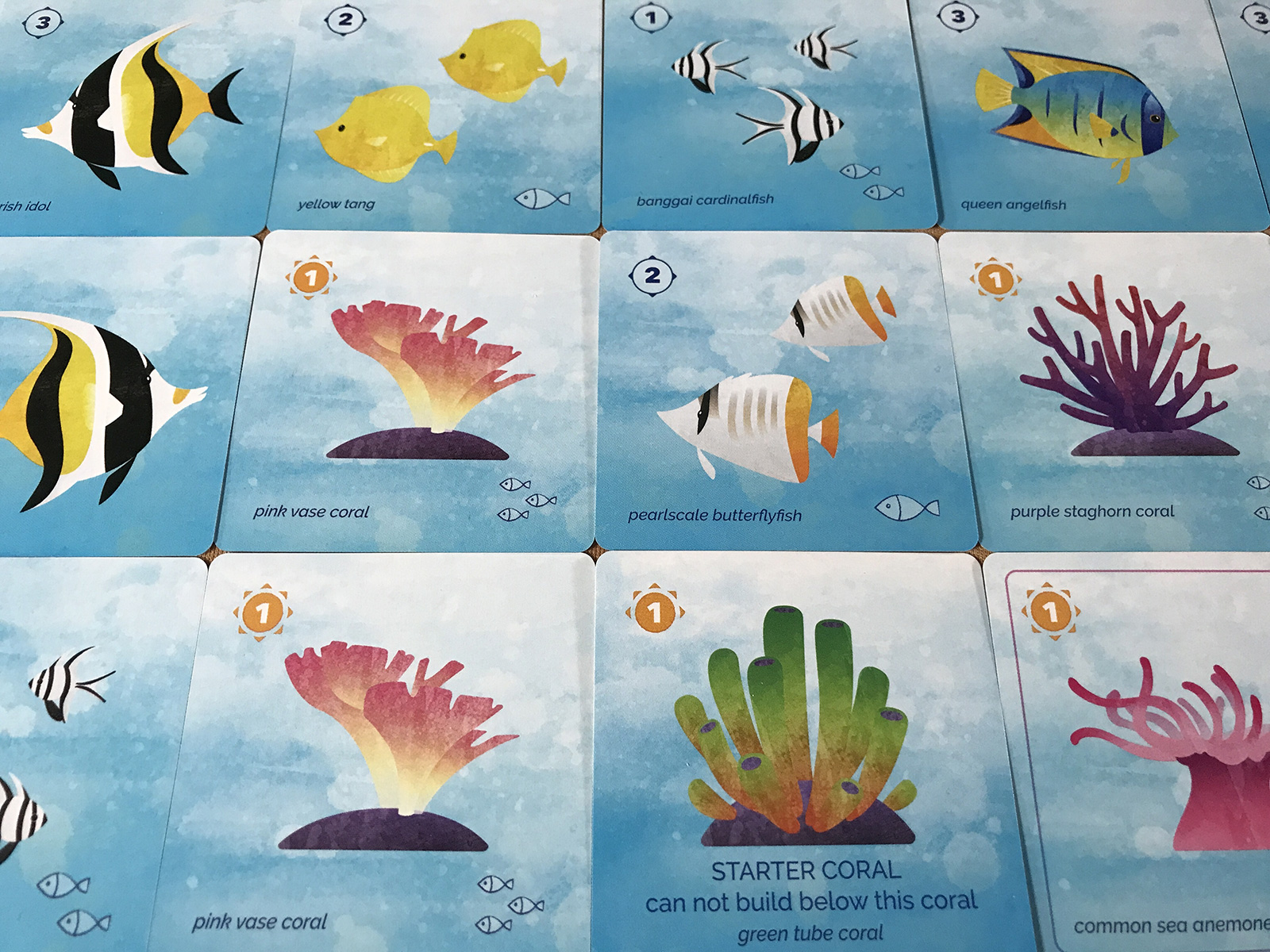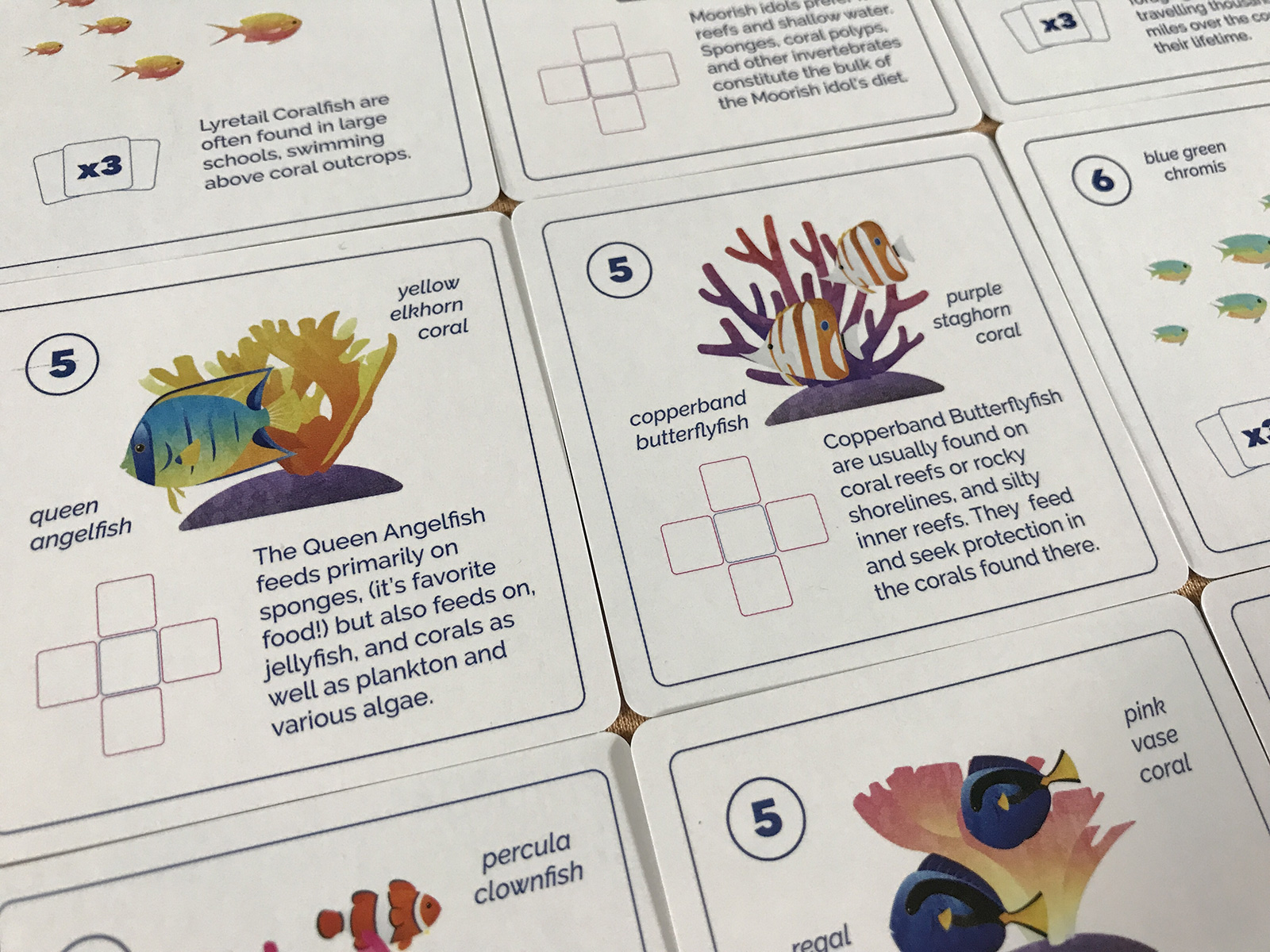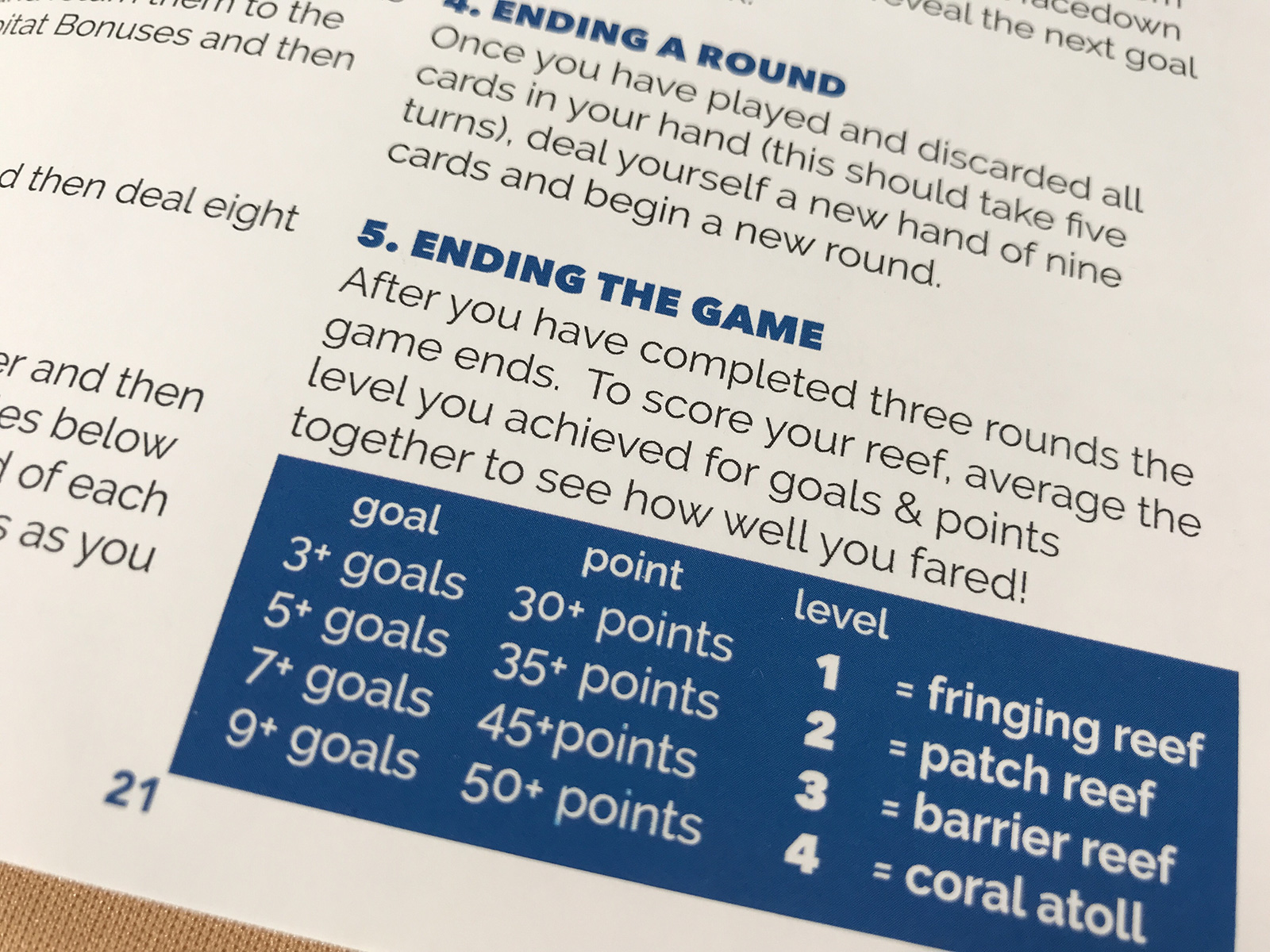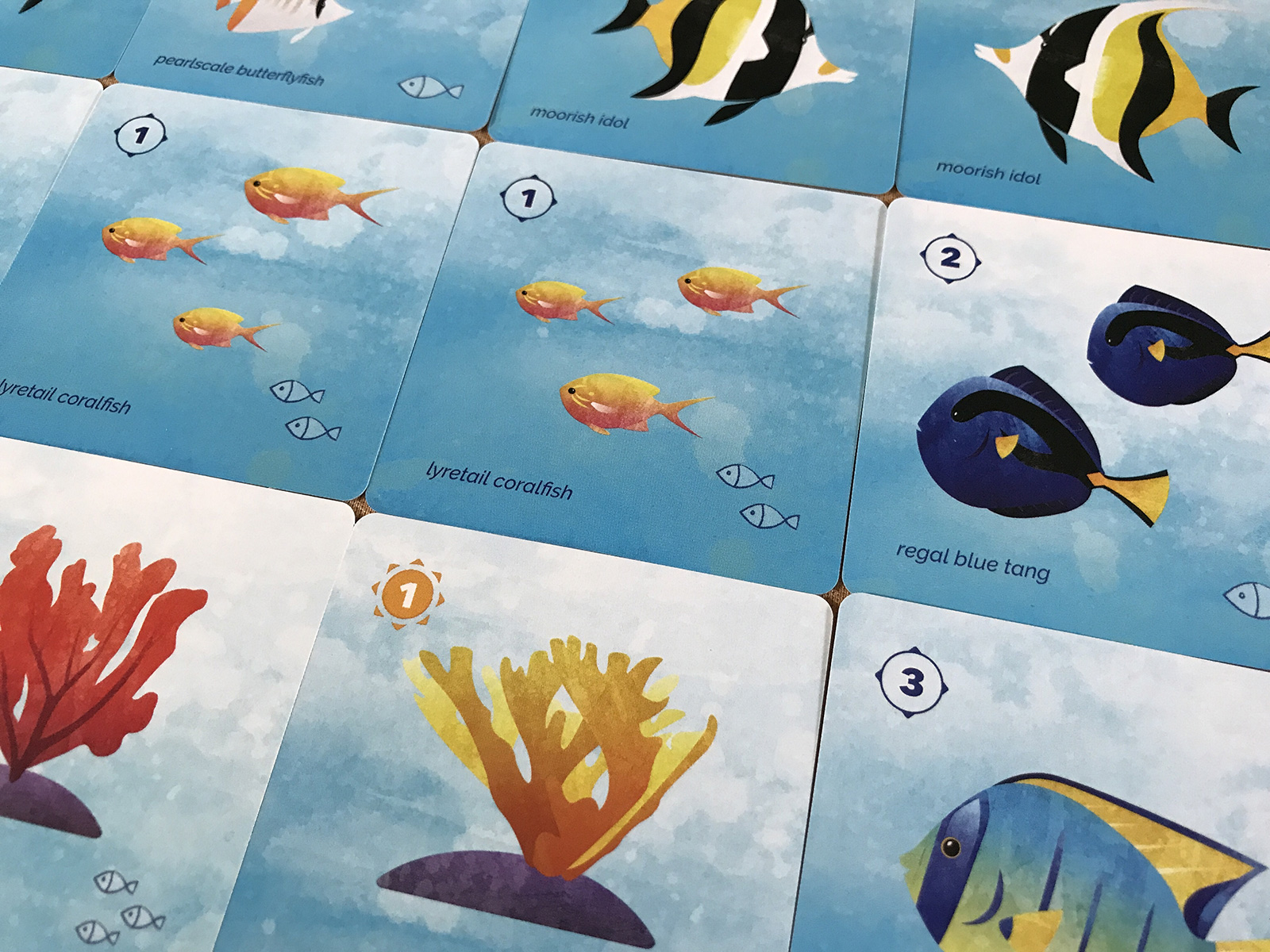The Underwater Wonders of Fish and Coral in Open Ocean

Attract residents back to the safety of their home reef after a recent storm with the colorful creatures in Open Ocean.
I’ll admit it: I did absolutely no research on Open Ocean and picked it up purely based on the artwork. So colorful and beautiful! Yet after Winterhaven Woods didn’t pan out for me, I’ve been a little nervous about bringing this game to the table. Still, it deserved a chance and I absolutely loved the theme and all the fish! To the tabletop sea I went!
Game Overview
Game Name: Open Ocean
Publication Year: 2020
Designer: Joel Bodkin
Artist: Joel Bodkin
Publisher: Featherstone Games
Solo Mode: Included in the Base Game
Over the course of 3 rounds, a reef takes shape with a variety of coral and fish. Most attract something else from the sea, creating small food chains and possible schools of fish. But watch out for the shark! Unprotected fish out in the open might get gobbled up without a coral home.
First Play
November 12, 2022
Complexity
1
Latest Play
November 12, 2022
Expansions
0
Setup Time
Almost None
Lifetime Plays
2
Play Time
10 Minutes
High Score
68
Game Area
26" x 24"
Low Score
55
Building Up the Reef
The formula was pretty familiar. Simple card choices came from my hand, where I played a card and discarded another each turn. The open sea might also help a bit.
I enjoyed the variety in the cards, as there were a lot more fish than I expected. My favorite graphic design trick was also employed… Some duplicates were mirrored. Ha!
My understanding of the game was a little questionable, as the 20-page rulebook covered a whole lot of exceptions.
There were some glimmers of hope in the neat way that smaller fish could attract larger fish, though.
Very Specific Goals
For the solo mode, 3 goal cards were always visible. Completing as many of these as possible was the ultimate aim… Or maybe victory points were? I was a little lost.
All of these were extremely limited, though. Managing to place a specific fish next to a specific coral meant I needed everything to align perfectly during a round.
Collecting 3 or more of the same type of fish was similar: I only saw part of the deck during a play, so it was random.
During my pair of plays, I managed to complete a single goal each time. Just luck-based, and not challenging.
Shark in the Water!
Perhaps my favorite mechanic revolved around the sharks. When 3 or more of these cards were in the ocean, I would have to lose my most valuable fish far away from coral.
I had a little agency over this, though, and the threat gave me more reasons to collect coral. However, it was all random: Some rounds, I only had fish to work with.
The artwork was lovely, though! Even the sharks looked pretty relaxed as they prepared for a fine fish meal.
It simply felt like a lightweight game turned out to be entirely luck-based with very few meaningful choices.
I Did… How Well?
Gauging how I did was confusing, and I’m still not entirely sure what this scoring table was trying to get across.
I easily hit the top tier in points without trying, but completing the goals had nothing to do with my strategy. Each was based on the random assortment of cards I had.
How in the world I would even hit 3 or 4 goals during a play seemed impossible, save for the perfect hand.
And then, to average my level across both? Was that 0 and 4, for a level of 2? Did goal cards score their victory points with this solo system? I was merely filled with questions.
Lightweight Games and the Value in Choices
I have a healthy collection of very light solo games that I play fairly regularly. They last maybe 5-10 minutes, involve minimal setup and few components, and don’t have deep decisions. But that’s a key point: Although they’re not deep, there are still choices to be made. Most of them are so quick that I don’t need to think. Yet they’re there.
Where some lightweight games falter is in the idea of meaningful choices. If I have options, I need at least some of those to be worthwhile ones. For example, let’s say my cards give me the “choice” of victory points in the values of 2, 1, 0, 0, and 0. All things equal, there isn’t a choice there: I’m taking the 2 victory points! The others aren’t actual choices.
That’s what I felt while I was playing this game. Almost every single turn, I had a hand that contained many cards. But a lot of those were duplicates, and not many synergized with what was available in the ocean. So even when I started a round with a whopping 9 cards, a quick glance showed me the obvious option. None of the others made sense.
Now, I can certainly see how introducing mechanics in a simple way would be excellent for some players. Perhaps that’s exactly the audience for this game! I should just note that the rulebook is very dense in text and I faltered with some of the concepts. A little more development would have gone a long way towards making this one more approachable.
Session Overview
Play Number: 1 and 2
Solo Mode: Included in the Base Game
Outcome: 55 and 68 (2 Wins)
The only variable was whether I could collect the right cards to complete more goals. I didn’t feel like I had many decisions to make, and my final reef was an assortment of the only cards I had to play. Even with the shark showing up, I didn’t lose a lot of victory points. I wanted to feel the excitement of attracting new fish, but the theme melted away as I merely looked for symbols or the rare matching cards for the goals. Definitely not a game for me.
%
1 Play
Affordability
Price & Value
4
Functionality
Challenges & Mechanics
2
Originality
Design & Theme
3
Quality
Components & Rules
3
Reusability
Achievement & Enjoyment
3
Variability
Distinctness & Randomness
4
+ Pros (Positives)
- All of the artwork is bright and colorful, and duplicates are a little more unique with reversed images.
- Some coral and fish can attract others, which can be a fun moment to add 2 cards to the reef at once.
- Although the play area spreads out, it never gets unruly and is constrained by the ocean floor from setup.
- Gameplay moves very quickly with a set number of turns per round and a clear sequence of steps.
- Victory points are clearly marked on all of the coral and fish, which makes final scoring fairly simple.
- Extra bonuses for fish schools and colorful coral add a few additional layers to earn victory points.
– Cons (Negatives)
- The card quality is very disappointing, as the cards tend to stick together during shuffling and don’t lie flat.
- Most choices are obvious and don’t require more than a few seconds finding the only option that works well.
- Completing goals is entirely luck dependent, which is more frustrating than challenging during play.
- Despite being a very lightweight game, the lengthy and text-heavy rulebook is very confusing to read through.
Victory Conditions
Score 50+ Points
- Overall Goal Progress 100%
Goals and Milestones
Score at least 60 points.
Continue the Conversation
What are some of your favorite parts of Open Ocean? Have you thought more about the choices present in different solo games? I hope that there is an audience for the game, although I would hesitate to recommend it for solo. It seems like it would do much better as a multiplayer experience, rather than floundering for a single player. Onto the next game!





0 Comments